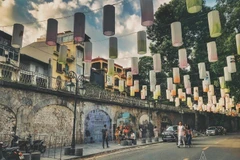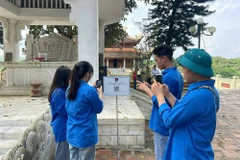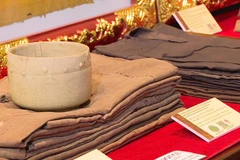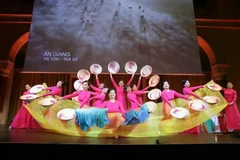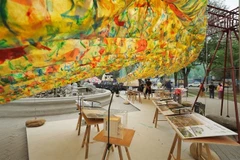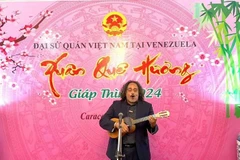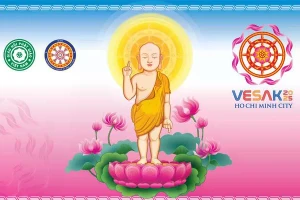Previously, the province had submitted documents to the UNEducational, Scientific and Cultural Organisation (UNESCO) to seekrecognition of the local ‘Hat Xoan’ singing as an intangible WorldIntangible Cultural Heritage in need of urgent protection.
Pham Sanh Chau, Director of the Foreign Ministry’s External Cultureand UNESCO Department, said that if things go as planned, the UNESCOwill announce its decision on the two applications in 2011.
Director of the Hung Kings Temple historical site, Nguyen TienKhoi, said that there are more than 600 places nationwide that worshipthe Hung Kings, their generals and their families but the largest numberof them is found at the Nghia Linh Mountain historical site inHy Cuong commune, Phu Tho province.
The Hung Kings Temple Festival has been held annually since 1460 underthe reign of King Le Thanh Tong to commemorate the 18 Hung Kings whofounded the country and started a golden age in Vietnamese history.
Since then, the Hung Kings Temple Festival has become a symbol ofnational unity and spirit and is a chance for Vietnamese people both athome and overseas to express their gratitude to their ancestors.
The anniversary of the death of the Hung Kings, which falls on the 10th of the third lunar month, was officially recognised as a nationalcelebration in 2000 and in 2007 the National Assembly approved aregulation making it a national holiday.
The Hung Kings Temple is located on Nghia Linh Mountain, Phong Chaudistrict, in Phu Tho province, 100 km northwest of Hanoi and is acomplex of ancient tombs, monuments and temples.
Notably, the Lower Temple, a popular tourist destination, wasaccording to legend, where Au Co gave birth to a sack containing 100eggs from which 100 babies were born. The eldest son, Hung Vuong, namedhimself king and the throne was passed down over 18 generations.
This year’s Hung Kings Temple Festival will be held on thelargest-ever scale from April 14-24 (the first to the tenth day of thethird lunar month). Cities and provinces across the country will alsocelebrate the festival at places of worship dedicated to the Hung Kings.
“Hat Xoan”, a kind of folk song from northern Phu Tho province, isbelieved to have been created more than 500 years ago. It is not onlypopular in 18 communes along the Lo River in Phu Tho province, but isalso sung in the midland and northern regions.
“Hat Xoan” is similar to a lullaby. As with “Quan Ho”, many of thesongs are about love, but it is also a kind of folk music that praisesvillage genies.
There are many forms of “Hat Xoan” including duets and choirs, allaccompanied by several kinds of dances.
Xoan festivals are often held in spring in village temples. On thefifth day of the first lunar month it is often sung at the Hung KingsTemple Festival./.






